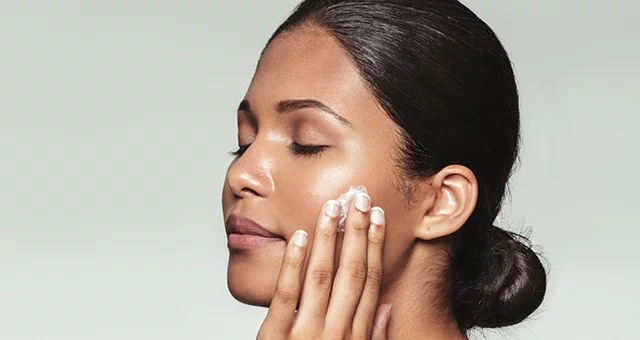These recommendations are entirely valid in the case of acne-prone skin. Be aware however that acne is an infectious complication and often of hormonal origin, which goes beyond simple oily skin (or lack of hygiene as one might have thought for a time). A routine, as correct and beneficial as it is, will not necessarily be enough to eradicate acne, it is advisable to consult if you suffer from real acne to find an adequate treatment (and sometimes internally) with the help of a health professional.
Oily skin: sebum is the key element
Sebum is an essential element in keeping the skin in good condition (suppleness, hydration, elasticity). The sebum is produced by the sebaceous glands, then goes up towards the epidermis on the surface of the skin by the pores. When its production is balanced, there is just what it takes so that the skin is comfortable and does not tug and that it is protected from external aggressions.
In the case of oily skin, on the other hand, the sebum is produced in excess. The extra sebum makes the skin shiny, especially when it’s hot. When the pores are saturated, they can also become clogged, causing blackheads, blackheads or pimples.
These phenomena can become inflammatory and be the seat of bacteria, as is the case for acne. Oily skin, blackheads, inflammations and imperfections (large pores, subcutaneous microcysts) are therefore very often linked.
Intermediate states of oily skin
Know this, whatever care you give to your skin, your diet, you will not go from oily skin to “normal” skin (if indeed “normal” skin exists outside that of the first years of life in babies) or even with dry skin. Oily Skin stays that way for life, even if it often changes as you get older, becoming less oily or even “normal”. On the other hand, there are intermediate states that appear, and are more to be linked to the care provided.
Oily skin can become dehydrated (not dry)
The production of sebum did not in fact decrease, but the use of drying agents dehydrated it . It is then necessary to change the routine and turn to softer products. Oily skin is not skin to be stripped!
Combination skin
The nose, forehead and chin area is oily, but the cheekbones and cheeks are dry. Again, the use of gentle products is recommended. As long as they are soft and well hydrated, oily skin products work on combination skin, because they will treat the oily area, while preserving the hydration of the dry area.
Adapted care: targeted active ingredients
There are lots of products, ranges intended for oily skin. We will not discuss here the products themselves, but rather the dosage and the type of ingredients that is suitable for the care of oily skin. Because there are subtleties that a routine for oily skin must respect to limit the phenomena that result from it on the one hand, but also to treat the problem at its source, rather than camouflaging it without real treatment.

